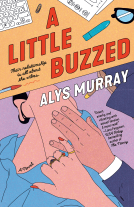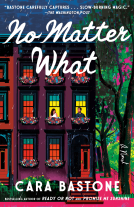
The Rise and Fall of the Religious Left
Politics, Television, and Popular Culture in the 1970s and Beyond
by L. Benjamin Rolsky
This title was previously available on NetGalley and is now archived.
Send NetGalley books directly to your Kindle or Kindle app
1
To read on a Kindle or Kindle app, please add kindle@netgalley.com as an approved email address to receive files in your Amazon account. Click here for step-by-step instructions.
2
Also find your Kindle email address within your Amazon account, and enter it here.
Pub Date Nov 12 2019 | Archive Date Jan 28 2020
Talking about this book? Use #TheRiseAndFallOfTheReligiousLeft #NetGalley. More hashtag tips!
Description
The creator of comedies such as All in the Family and Maude, Lear was spurred to found the liberal advocacy group People for the American Way in response to the rise of the religious right. Rolsky offers engaged readings of Lear’s iconic sitcoms and published writings, considering them as an expression of what he calls the spiritual politics of the religious left. He shows how prime-time television became a focus of political dispute and demonstrates how Lear’s emergence as an interfaith activist catalyzed ecumenical Protestants, Catholics, and Jews who were determined to push back against conservatism’s ascent. Rolsky concludes that Lear’s political involvement exemplified religious liberals’ commitment to engaging politics on explicitly moral grounds in defense of what they saw as the public interest. An interdisciplinary analysis of the definitive cultural clashes of our fractious times, The Rise and Fall of the Religious Left foregrounds the foundational roles played by popular culture, television, and media in America’s religious history.
Advance Praise
"L. Benjamin Rolsky intends to prod and provoke, and he does so through his sophisticated analysis of the effect of Lear’s work. This is a strong, important, and innovative work. The framing of Lear within the 'politics of religious liberalism,' the explanation of the creation and workings of a mainstream Protestantism that saw itself as a sort of caretaker of the nation, and the challenging and intellectually complex thesis pursued here all highly recommend this as an important work that should draw attention, discussion, and debate."
- Paul Harvey, author of Christianity and Race in the American South: A History
Available Editions
| EDITION | Other Format |
| ISBN | 9780231193634 |
| PRICE | $35.00 (USD) |
Average rating from 4 members
Featured Reviews
Much attention has been given over the last forty years to the rise of the religious right, and the culture war between secular liberalism and the religious right. Left out of much of this analysis are the efforts of religiously and spiritually liberal individuals. This work seeks to correct that oversight through a focus on the spiritual vision of Norman Lear and the movement he catalyzed among liberal Protestants, Catholics, and Jews in the 1970’s and early 1980’s. It also focuses on why this move did not succeed in its objective of fostering a religiously plural, civil, and tolerant public square.
The work begins with a historical and sociological survey of the liberal religious tradition in American life, and the kind of civil engagement it sought in political life–an engagement that advocated tolerance, civil engagement, a Rawlsian commitment to invoking public rather than religious reasons for political positions, and the separation of church and state to protect diverse religious perspective.
We are then introduced to Norman Lear, and the catalytic role he played in upsetting the status quo first of all through the sitcoms he produced, like All in the Family and secondly through his advocacy organization, People for the American Way. The book traces the controversy that surrounded Lear’s programming, which explored contemporary issues around race, sexuality, the nature of the American family, and more. Lears own biography is traced, and particularly the secular Jewish tradition from which he arose, and his early resistance to the anti-Semitic intolerance of Father Charles Coughlin’s broadcasts in the 1930’s.
Lear’s situation comedies created a forum where different viewpoints were stated and forthrightly argued, challenging accepted views of the time. Perhaps most controversial was the episode of Maude as she wrestles with and decides to pursue an abortion. These shows reflected the vision of a civil society that did not suppress difference and dissent but protected a public square where different views and ways of life could be aired and lived side by side.
In consequence, resistance to Lear’s programming arose from movements arising from the religious right, including an “electronic church” growing in sophistication. This consisted of protests against programming, efforts to either restrict or provide counter views through the FCC and the Fairness Doctrine. The exploration of alternative moral choices violating traditional values gave rise to efforts like the Moral Majority, a movement that moved being mere religious programming to political advocacy to enforce its morals and beliefs upon wider American society.
Rolsky chronicles Lear’s transition from sitcom production to forming an advocacy organization of his own, People for the American Way, to use television, coalitions with liberal religious groups, and public meetings to advocate for Lear’s version of liberal spiritual politics. All this culminated in his I Love Liberty program, which simultaneously advocated a plural and civil public square, and excluded those on the religious right who did not share his premises.
This paradox, an intolerant tolerance, helped energize a religious rights. In place of an arm’s length, though liberal engagement in politics came the growing alliance of political conservatives and the religious right. One has the sense in reading this account of a missed moment as well as a blind spot in the savvy media strategy of Lear. Somehow, Lear thought he could achieve his vision of a civil, tolerant public square while barring that public square from those whose approach he opposed. Sadly, what he did was awaken an ideologically energized movement that his own movement failed to rival, and helped create the hardened, divided discourse that we have inherited.
I don’t know what can be done at this juncture to escape our deeply divided public discourse. What we learn from Lear, and this account, is that an approach that excludes one’s adversaries from public discourse, and fails to extend the good will that one advocates for in a civil public square, will not succeed. I think today of those who might consider themselves “progressive evangelicals.” Secretly, I believe they often vilify conservatives as “deplorable” as did a recent presidential candidate. This work suggests that such efforts will fail as did Lear’s. Is it time for a different way of framing moving beyond left and right, liberal and conservative, progressive and fundamentalist?
____________________________
Disclosure of Material Connection: I received a complimentary review e-galley of this book from the publisher via Netgalley in exchange for an honest review. The opinions I have expressed are my own.
Readers who liked this book also liked:
Coco Morante
Cooking, Food & Wine, Health, Mind & Body, Nonfiction (Adult)












